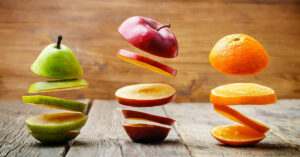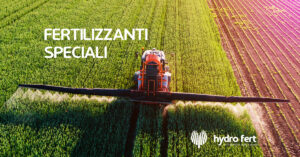Choosing fertilizers for agriculture can be a true challenge. There are so many products available in the market and every single one shows some specific characteristics.
How to choose the right one then?
The answer lies first of all in the goal to be achieved and the type of plant you need to feed.
Labels of fertilizers. The first step to avoid any mistakes.
The presence of crops mentioned on the label does not have always a specific value, besides not being always indicated.
In fact, the same fertilizer can be used for different types of crops.
So, how should we figure it out?
The first thing to do is to realize the content of products. On the labels there are three digits, a variable that indicates the percentage content of N (nitrogen), P (phosphorus), K (potassium), the elements that plants need the most.
These are the mineral salts present in soils under cultivation conditions that can only be restored, through a correct fertilization plan promoting a balanced supply.
The main nutritional elements in soil are the Macronutrients, which have a plastic function becoming part of plants tissues.
Nitrogen, Phosphorus and Potassium: the essential elements we cannot leave out of consideration.
Nitrogen (chemical symbol N) is with no doubt the first element to be considered in a fertilization plan and it is a substance difficult to measure out, first of all because it can be easily washed away by rain and irrigation water. For this reason, it must be supplied several times.
There are specialty fertilizers, such as Hydro Fert products, at slow and controlled release, which help the plant absorb the nutrients in a constant and gradual way, avoiding wastes and optimizing the investments.
Nitrogen is an essential element for plants. Without nitrogen the plant is not able to grow, while in case of excessive quantities we would obtain a huge vegetative development, but with watery tissues, not so consistent and less coloured, with significant negative consequences for fructification.
Phosphorus (chemical symbol P) is another important element, with a stimulating action on plant roots.
For fruit trees, instead, potassium (chemical symbol K) performs the main action, especially during the « maturation » of those tissues useful for the production of flowers, fruits and seeds.
It is therefore important to read the label and know which substances are really present in the fertilizer and how these are released into the soil.
Iron: total or chelated?
Another example can be showed with iron, essential to guarantee the colouring of leaves.
Often you can find products with the lettering « total iron » on the label, meaning that they have the element in its mineral state scarcely available. On the other hand, those fertilizers with the lettering « chelated iron » or « water-soluble » result to be more effective, since they guarantee that iron is linked to a protein structure that will carry it inside the plant, favouring its absorption.
Immediate and slow-release fertilizers.
According to the type of crop to be nourished and the goal to be achieved, it is possible to use fertilizers with an immediate action or at slow-release.
The former ones, useful for a « rapid growth », have a stimulating, fast and intense action on the plant, with the nutrients inside in a highly assimilable form and that can be easily added to water through irrigation systems.
These products are to be used at the beginning of the season or right after the summer break, always following the waiting times recommended between two subsequent applications.
The slow and controlled release fertilizers permit, through irrigations and rains, to dissolve the small granules of fertilizer only on their surface, leaving the undissolved matrix in their lower part. Therefore, plants get the nourishment they need in a slow, constant and gradual way, showing their full potential.
Even in that case, a period of time must elapse between one application and another, before any further application.
There are also fertilizers at very slow release, which must be put on the bottom of planting holes for trees, shrubs and plants.
Conclusions
Once you have learned the right type of nourishment for plants and figured out how to read labels, it won’t be difficult to follow the fertilization plan for each single crop.
For this reason, we kindly recommend you discovering more about Hydro Fert fertilization plans, with all the details about the product to be used, its functions and results, differed by fruit trees, industrial crops, vegetables, floriculture and ornamental plants.





